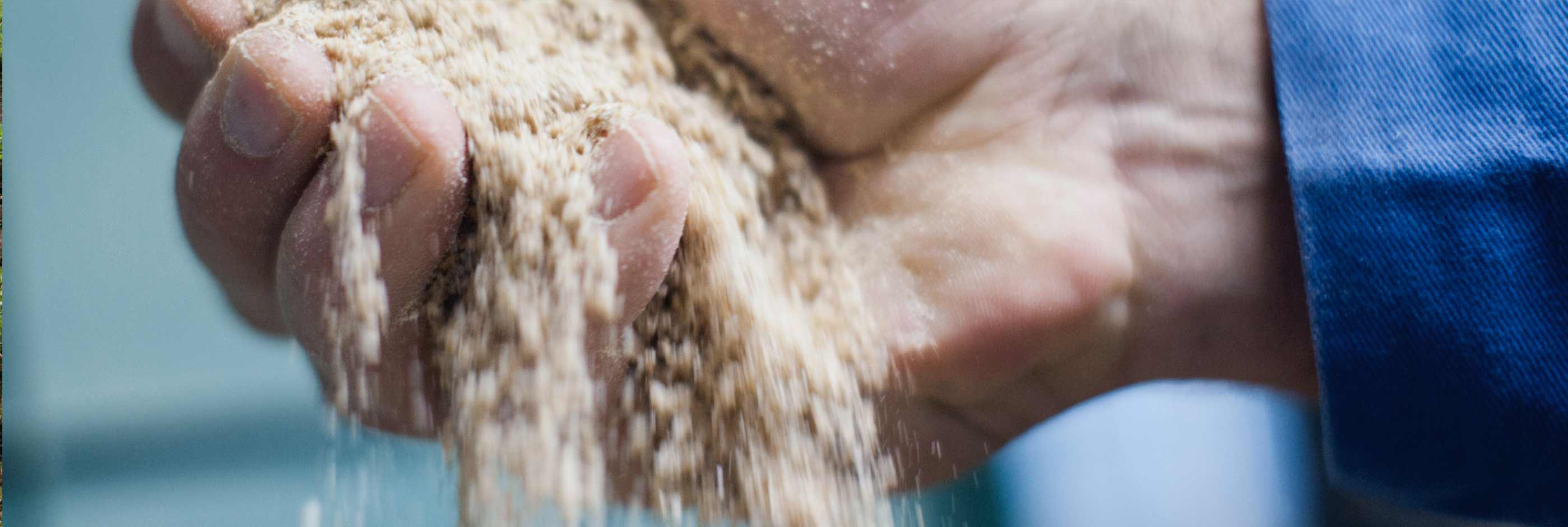Bird welfare in poultry production: dietary soy α-galactosides do play a role!
By HAMLET PROTEIN
Bird welfare in the spotlight around the World
Nowadays, bird welfare in the intensive poultry production has become a central issue for authorities, producers, and consumer associations in the most demanding markets and, consequently, is gaining more and more relevance worldwide. Thus, the National Chicken Council (NCC) of the USA updated its Animal Welfare Guidelines and Audit Checklist in 2017 to assist chicken producers and processors in this effort. These guidelines have indeed been widely adopted by American chicken farmers. Likewise, in 2018, the European Commission issued a report on the application of directive 2007/43 / EC, which lays down rules for the protection of chickens kept for meat production, confirming broad compliance with that regulation in all member states of the European Union. In this spirit, also the Brazilian poultry industry and other chicken meat export leaders are working to maintain the standards that meet the strict American and European demands. In this ever-changing context, the degree of incidence of footpad dermatitis (FPD) in chickens has become, without a doubt, a relevant animal welfare indicator in poultry farms.
Footpad dermatitis and wet litter: the inseparable duo
FPD is an inflammatory disorder with necrotic lesions on the plantar surface of the bird’s feet, which may be superficial or deep. Due to the inflammatory and other pathological characteristics of the lesions, poultry specialists have assumed the condition to be painful, negatively affecting bird welfare and performance (Rault and Matthews, 2014). In addition to these considerations, the impact of FPD on economic performance in the poultry industry is very important because it causes downgrades and condemnations of saleable chicken paws. In this sense, the US revenue of chicken paws was estimated at 270 million USD from export to Asian countries in 2018 (Cang, 2020). Therefore, harvesting unblemished paws has become a main concern to poultry companies all over the world.
The most critical risk factor for the development of FPD is the litter condition. The litter moisture and ammonia concentration from built-up feces can burn the dermis of the footpad, with an enhanced FPD resulting from the persistent contact of feet with wet litter. Moisture causes the surface of the dermis to soften, posing a risk of microbial contamination, resulting in necrosis (Freeman et al., 2020). Wet litter triggers and, in turn, FPD causes include weather and environment, relative humidity, ventilation and heating, housing, drinking system, bedding material, flock management, health and disease, and nutrition. Dunlop et al. (2016) have skillfully reviewed the role of nutritional factors in relation to wet litter issues, the main factors being soluble non-starch polysaccharides present in viscous grains (wheat, barley) -problem solved using commercial carbohydrases-, excessively high levels of Ca, P and Na in phytase-supplemented diets and hard drinking water. However, it should be noted that another extremely important dietary factor in the origin of wet litter and, consequently, of FPD are the probable high levels of indigestible galacto-oligosaccharides from soy in feed.
Soy α-galactosides, neither digestible nor completely fermentable
Stachyose and raffinose are the main components of soy α-galactosides or oligosaccharides. They are simple sugars comprising a sucrose molecule to which are attached α-d-galactopyranosyl units in α-1,6-galactosidic linkages (Figure 1).

Figure 1. Chemical structures of soy α-galactosides
Stachyose and raffinose cannot be digested in the gastrointestinal tract due to the absence of α-1,6-galactosidase activity in the intestinal mucosa of monogastric animals, which is needed to break the above-mentioned α-1,6-galactosidic linkages. Consequently, both α-galactosides pass undigested to the large intestine where they may be anaerobically fermented by gut bacteria (Hill, 2003). However, the hindgut fermentation of broiler chickens may not be as effective as in pigs; particularly in young chicks, whose gut microbiota has not fully settled yet. If the chicken starter feed contains high levels of soy α-galactosides, some of these will never become fermented in the large intestine. Marteau and Boutron-Ruault (2002) reported that indigestible carbohydrates, such as stachyose and raffinose, exert an osmotic effect in the gastrointestinal tract if they are not fermented. This high osmotic effect makes the digesta watery, which reduces the digesta transit time in the gut of the chicken, resulting in an increase in intensity of diarrhea and, subsequently, in an increase in the humidity of the litter (Figure 2).

Figure 2. Soy α-galactosides or oligosaccherides move through the digestive tract exerting an osmotic effect
Perryman et al. (2013) reported a considerable decrease in the incidence of FPD when reducing the content of soy α-galactosides in broiler feed (Figure 3), which corroborates the negative impact these indigestible compounds may exert on footpad health in chickens.

Figure 3. Incidence of FPD in broilers fed diets containing different levels of soy α-galactosides. Adapted from Perryman et al., 2013
In summary, when your flocks suffer FPD, in addition to evaluating all the predisposing factors related to weather, housing and facilities, drinking system, bedding material, management and health status, it will be imperative to check the composition of the feed, especially the starter feed. In this sense, among other nutritional strategies, the reduction of the content of indigestible soy oligosaccharides in broiler starter feed will help ameliorate FPD and will contribute to chicken welfare.

